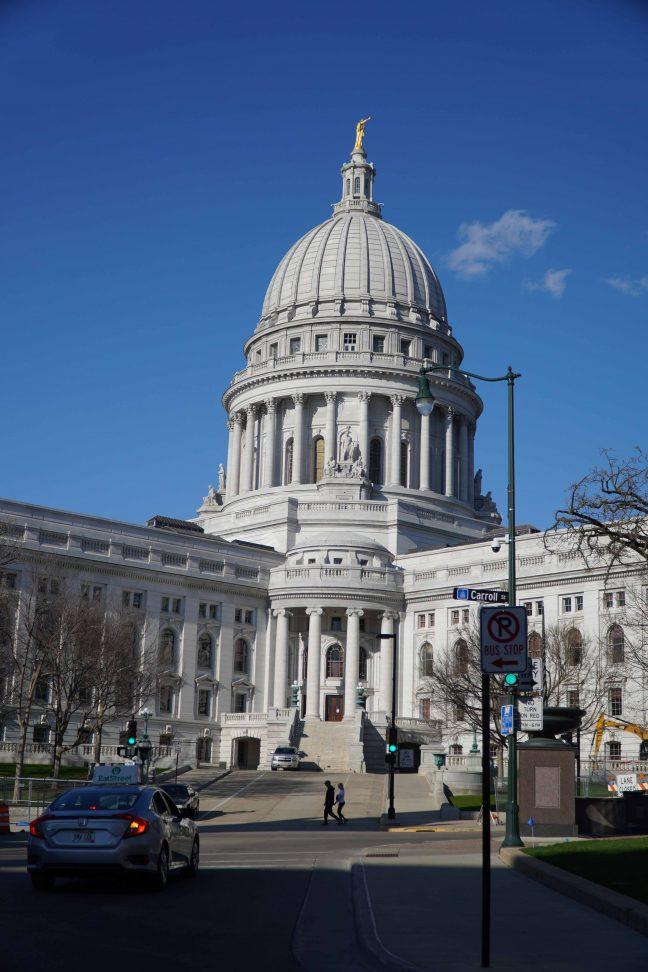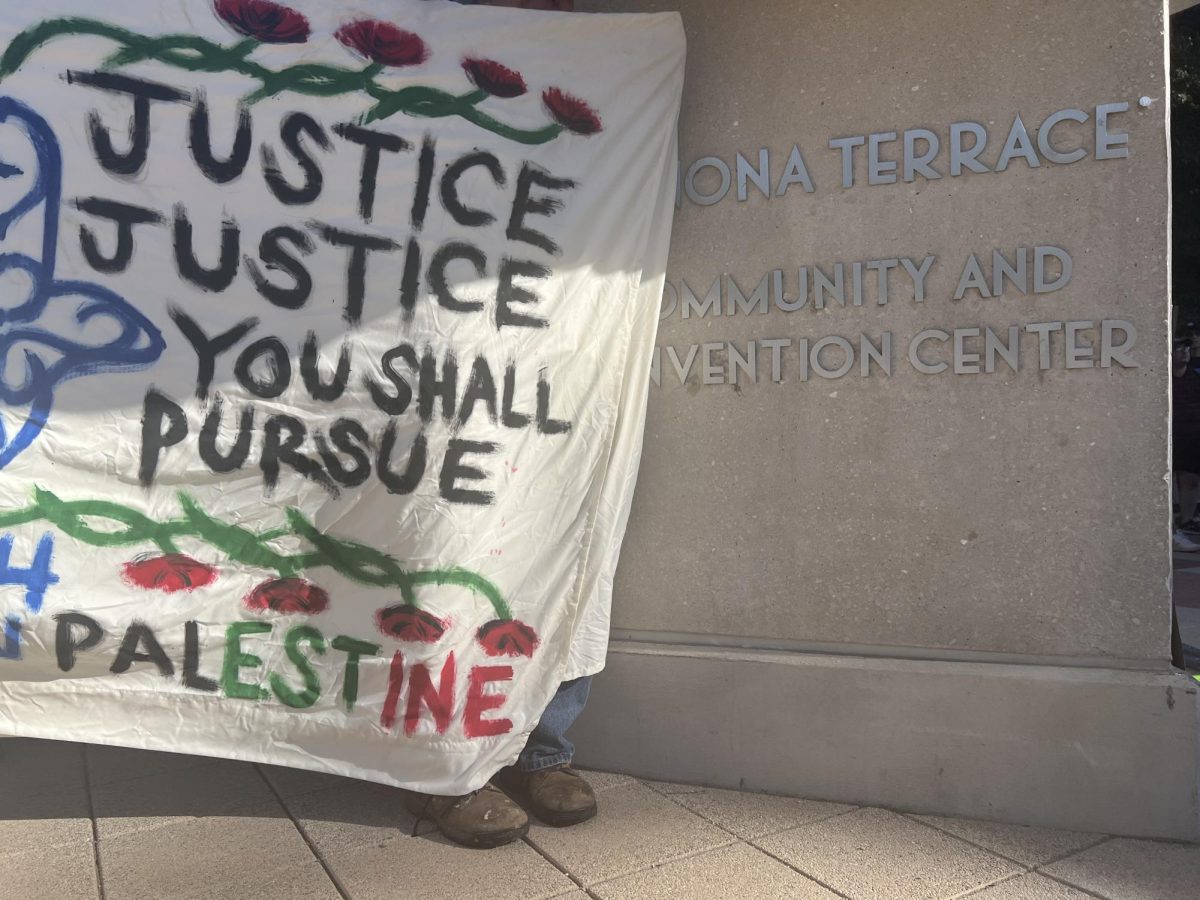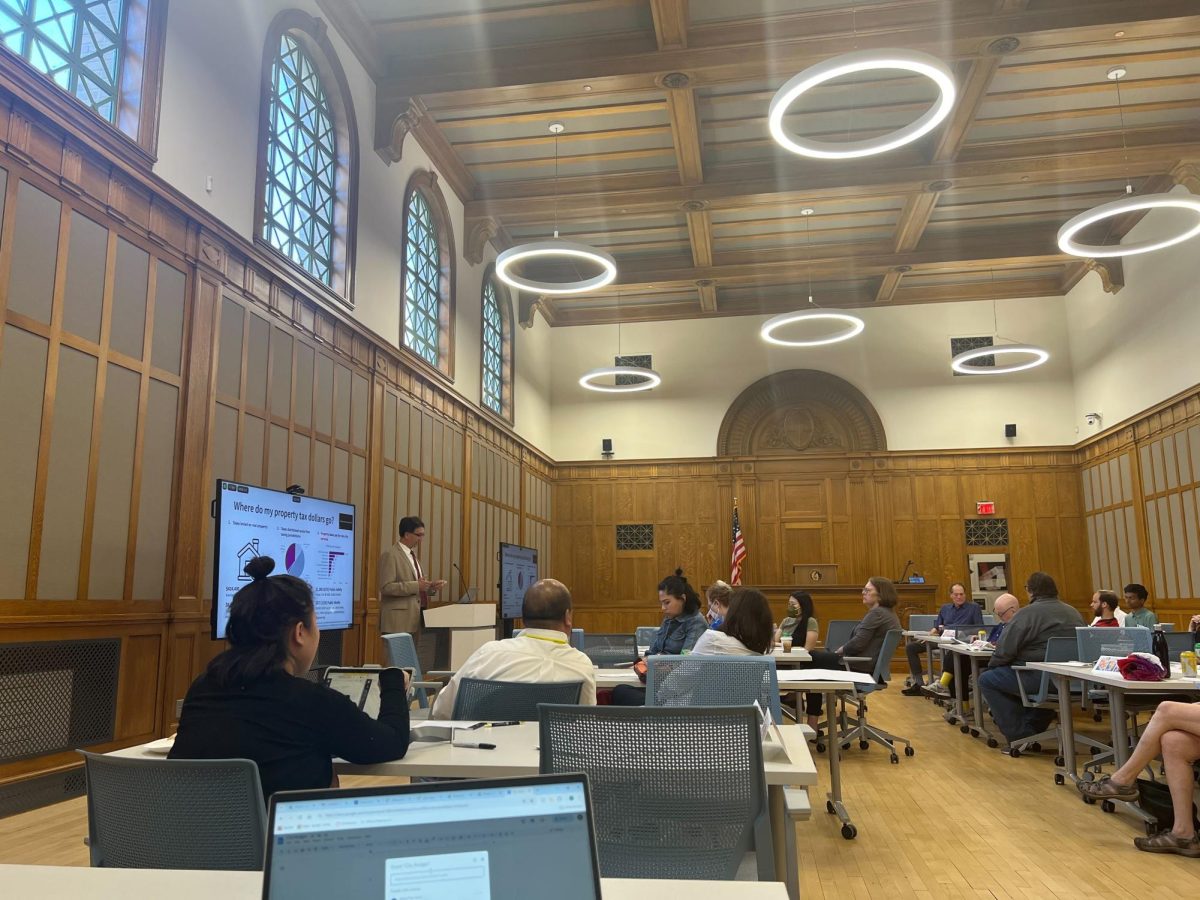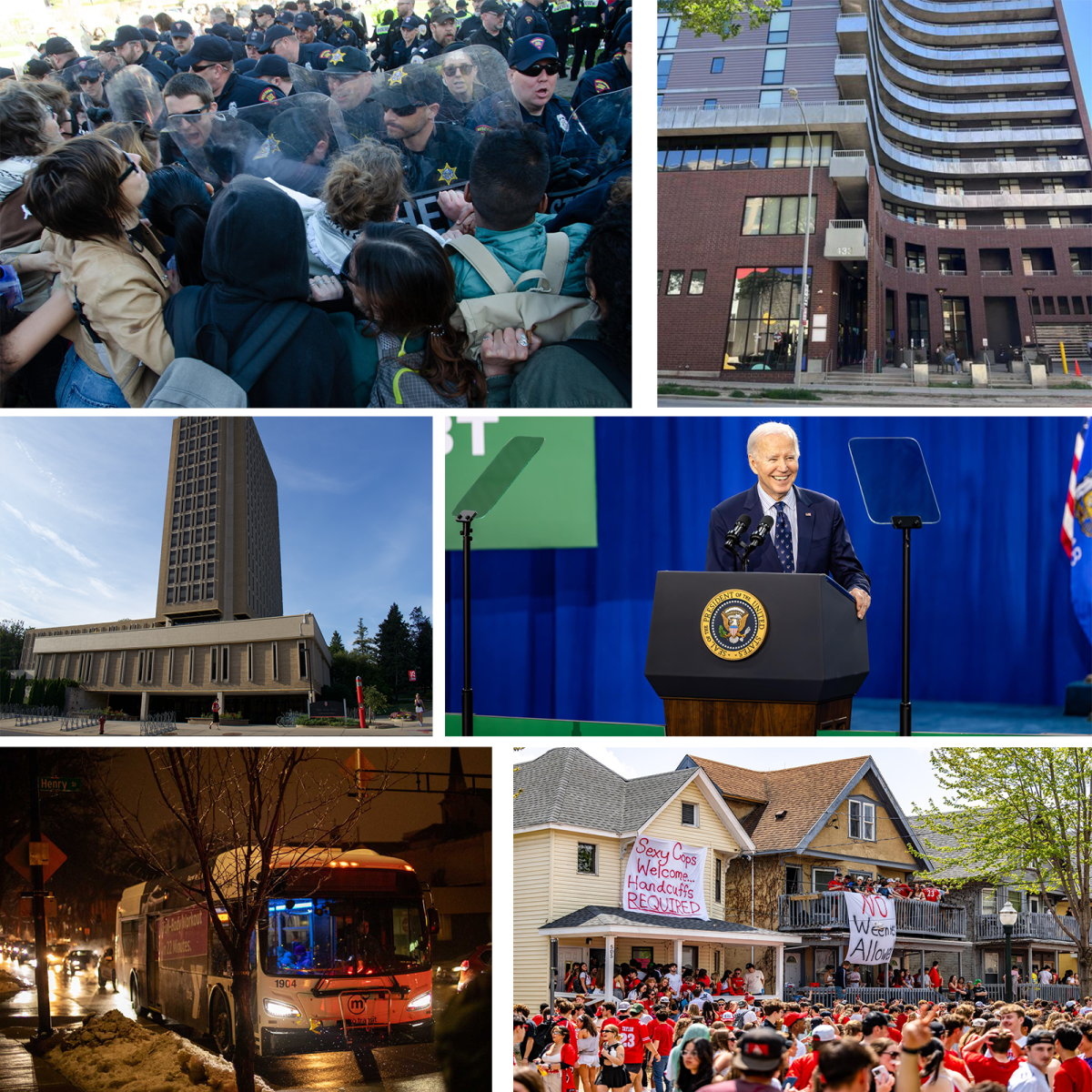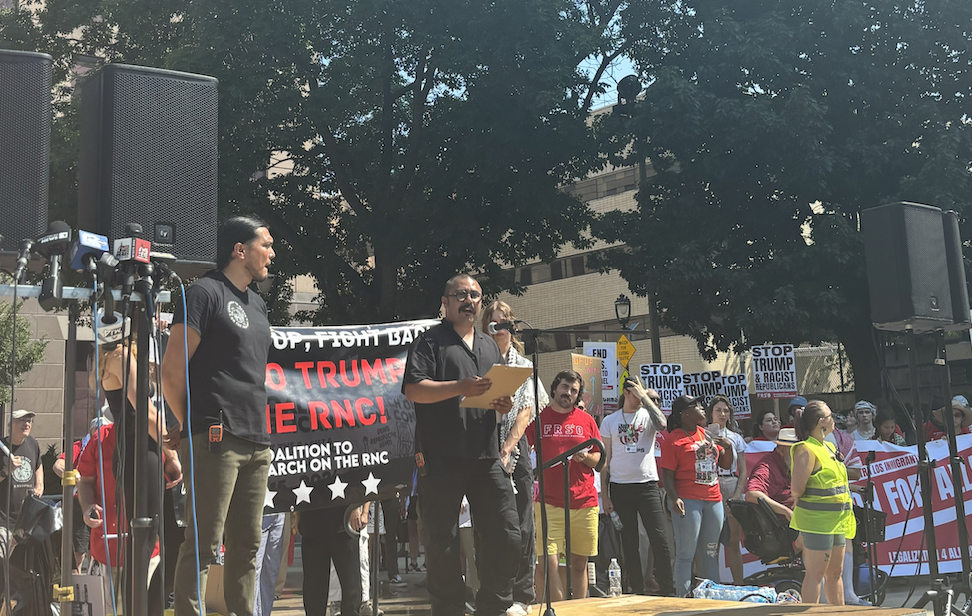Mass shootings have become a norm in America.
At a Las Vegas music festival in October 2017, a gunman killed 58 people and injured more than 480.
At a church in Sutherland Springs, Texas barely a month later, a gunman killed 26. At a high school in Parkland, Florida on Valentine’s Day this year, a gunman killed 17.
A week after the Parkland shooting, Quinnipiac University reported public support for stricter gun laws increased to 66 percent. Some of the loudest voices in support of gun control come from citizens who can’t even vote yet — including many of the Parkland students. On Wednesday, March 14, Madison students will join thousands in a national walk out for gun control.
Still, simply saying the word “gun” unleashes a firestorm of opinions. Despite majority support for stricter gun laws, many outspoken opponents remain.
At the center of debate is the Second Amendment. While some believe the right to bear arms should go unchecked, others argue it should be highly regulated.
In a state like Wisconsin, gun culture is relatively strong. Just this past November, the Republican-controlled government lifted the minimum age requirement for hunting. Less than a week after the Parkland shooting, the State Assembly rejected a universal background check bill. During the same session, it passed a bill to fund grants for arming school security guards.
Residents of Wisconsin, too, are relatively lukewarm on gun control. A recent Marquette Law poll found that 57 percent of voters think gun laws would have no effect at all in preventing mass shootings.
Despite political polarization, law enforcement and communities across the country are preparing for the possibility that the unthinkable could happen to them as well.
Do campaign contributions control gun policy?
Mass shootings have evoked strong reactions in the form of finger-pointing and frustration on both sides of the aisle. One issue of contention is whether the National Rifle Association impacts the passage of gun control legislation.
Conversation about gun control is difficult because interest groups like the NRA have a seat at the table, Rep. Melissa Sargent, D-Madison, said.
As a result, Wisconsin has relaxed gun safety regulations in the past few years and been “moving in the wrong direction.” She said the political system is rigged to favor the voice of the rich and powerful who are backed by groups like the NRA.
If legislators in Wisconsin, regardless of party affiliation, are interested in representing their constituents, they should move forward with common sense gun policy reform, Jeri Bonavia, executive director of Wisconsin Anti-Violence Educational Fund said.
“The corporate gun lobby, including the NRA, has been pushing hard to normalize people carrying guns in public places,” Bonavia said. “Research is clear that increasing the number of people carrying guns in more places does not make us safer.”
Like Wisconsin, the Florida House of Representatives, Senate and governor are all Republican. Despite this, Florida increased the minimum buying age to 21, extended its handgun waiting period to include long guns and made bump stocks illegal. Only hours after being signed into law on March 9, the NRA filed a lawsuit against the state.
Rep. Scott Allen, R-Waukesha, does not think contributions from the NRA increase U.S. violence. On the contrary, the NRA could be a strong ally for solutions in the future, he said.
But Allen, as chair of the Committee on Constitution and Ethics, does believe that some degree of regulation is appropriate. He said, just as the First Amendment right to freedom of speech is regulated to ensure public safety, so should the Second Amendment.
“What are the reasonable restrictions that we would put in place for purposes of public safety?” Allen asked. “That’s where we have a wide divergent array of opinion about what is reasonable in restricting our Second Amendment right.”
The NRA is critical, Jeff Nass, former executive director of Wisconsin Force and owner of Nass Consulting LLC, said. Calling it the oldest civil rights organization in the country, Nass said the NRA’s strength is in its ability to rally law-abiding citizens to vote.
While conservatives claim that the NRA does not impact policy making, it is important to note that the NRA contributed $3.5 million to Governor Scott Walker’s 2010, 2012 and 2014 campaigns combined.
To David Pelikan, press secretary for University of Wisconsin’s College Democrats, the NRA pushes the vote of legislators in favor of its interests and against the desires of their constituents.
“In Congress, we usually can’t even get a vote on these things that have widespread public support,” Pelikan, a first-year student said. “It’s because there’s so much money coming from the NRA’s PAC that contributes directly to the candidates. If we can’t move past that then the political landscape for gun control is difficult.”
For others like Abby Streu, chair of UW’s Young Americans for Freedom, gun control actually threatens the safety of Americans.
Authoritarian regimes can use gun control to stop citizens from fighting against tyranny, she said. The Second Amendment is meant to prevent this from happening in America and that’s why limiting gun control policy is important, Streu said.
Preparing for an active shooter
While politicians debate the Second Amendment, Madison Police Department and local schools have started training programs and drills in an effort to decrease the number of casualties in these events should an incident happen locally.
“A lot of these events begin and end very quickly — so quickly that they even end prior to police arrival.”
While the violent crime rate is essentially at an all time low in the U.S., mass shootings are an exception because they’re actually on the rise, MPD officer Matt Magolan said.
“Even though you’re about as likely to be struck by lightning as you are to find yourself in an active shooter event, it is still a very high impact event in the lives of the people who they affect,” Magolan said.
Magolan noted that often times the only emergency training people receive are for fires and tornados. While the fire response — running to an exit — is good for an active shooter scenario, ducking and covering for a tornado makes people sitting ducks. When people stay still in hopes of being seen as dead or for the shooting to end, they are typically shot at more, he said.
About three years ago, MPD partnered with a group from Texas State University-San Marcos to implement the Advanced Law Enforcement Rapid Response Training model. The statistics-based program draws from past shootings to maximize survival, and the FBI named it the premier civilian training program for active shooter scenarios.
ALERRT aims to empower people through facts which dispel false narratives. The program includes three portions: Avoid, Deny and Defend. If an active shooter event occurs, the first step is to avoid the shooter completely. Magolan encourages people to run or crawl away from the gun shots and toward an exit.
“A lot of these events begin and end very quickly — so quickly that they even end prior to police arrival,” Magolan said. “So training civilians is really important because you can train the police all you want but if these things are over with before we even get there then the civilians are the ones who need the training.”
If the shooter is close by, deny access by locking doors to prevent becoming a target. Finally, if the first two steps fail, Magolon said to go on the defensive using whatever means necessary.

Training can be requested for any Madison venue, including businesses, schools and religious centers.
Sargent said her 7-year-old son came home from school and described a “code red drill” to her in which they put tape over classroom windows, lock the doors, close the curtains, put furniture in front of the doors and hide in closets or under desks in silence.
“It’s disgusting, quite frankly it’s disgusting that this is the reality that we are living in,” Sargent said. “It’s very hard not to be paralyzed by it.”
Political divide over best route to public safety
When it comes to a solution for mass shootings, there are many opinions but little consensus, especially given the political deadlock on gun control.
When talking about gun violence solutions, people often compare America to other countries where mass shootings are far less frequent. In 2016, America had 3.85 violent gun deaths per 100,000 people while Canada had .48 and the United Kingdom had only .07. This gun violence rating places America barely better off in terms of gun violence than Iraq, which had 4.28 deaths per 100,000.
Given the correlation between strong gun control and lack of gun violence in other countries, Pelikan said “inaction is embarrassing.”
“If we can’t have common sense regulations in place then we’re never going to have the same amount of public safety with regards to mass shootings as these other countries,” Pelikan said.
Shortly after the handgun waiting period was repealed in 2015, an individual in Madison purchased a gun and killed someone the same day, Magolan said. Due to the experience, Magolan said he doesn’t think there should be much debate regarding whether or not the waiting period can be a positive safeguard.
Bonavia also said there are multiple gun control approaches that could be taken which “would not be in any way offensive to gun owners” and could “coexist with a vibrant gun culture.” She suggested using risk factors historically associated with violence as a way to weed out dangerous individuals as potential gun buyers.
But some reject the practicality of the measures all together. Streu said to decrease gun violence, America has to shift toward a more responsible gun culture. Through promotion of respect when dealing with guns, overall safety could increase.
Allen said background checks already exist in Wisconsin and that they’re appropriate but not a solution. Federally licensed dealers must initiate background checks on buyers in Wisconsin, but private sellers do not have to conduct them to complete sales. In many mass shootings, a background check would not have stopped the shooter, he said.
“If our objective is public safety then we ought to focus on what is going to produce the greatest likelihood of public safety,” Allen said. “And background checks have shown not necessarily to be reliable in terms of [weeding] out those who have caused harm.”
Allen added that if gun control is the answer, Chicago, which has high gun regulation, would have one of the lowest homicide rates in the country but it does not. He said the issue is “more pervasive than simply legislation of who has access to guns and how it is controlled.”
When the Chicago Police Department traced the origins of recovered guns from 2013-17, though, 60 percent came from outside of the state, from places with more relaxed gun laws like Indiana or Wisconsin.
Do more guns make us more safe?
Disagreement on gun control can be split on the claim “more guns make us more safe.” Calls to arm teachers fall in the category of support while those looking for an assault weapon ban and other restrictive legislation oppose it.
Rep. Terese Berceau, D-Madison, pushed back on the idea that arming more people would improve safety. If an active shooter were to appear nearby, more armed people in the area would make identifying the shooter more challenging for authorities.
In light of the Assembly’s approval of legislation which would issue grants to arm school guards, Pelikan said if guns were not getting into the hands of children to begin with because of weak regulations, there would be no reason for armed security guards.
“We’re already under-funding our schools so then to put money into putting armed guards in the schools, instead of putting money into public education, is something that [College Democrats] think is wrong,” Pelikan said.
But Nass argued that if an active shooter knew someone would shoot back, they may reconsider carrying out a mass shooting. The gun-free status of schools and other buildings takes away that possibility though.
Nass stressed that even if one does not want concealed carry, they are safer because someone near them may be armed and able to come to their defense.
Allen said legislation really only affects law-abiding citizens because when it comes to “those who willingly break the law — there’s no law written that can stop them.”
Mental health, mass media and mass shootings
There are, though, two areas with some overlap in reform support from conservatives and liberals alike — mental health and media.
“We’re already under-funding our schools so then to put money into putting armed guards in the schools, instead of putting money into public education, is something that [College Democrats] think is wrong.”
Nass said solutions should address mental health, not the law-abiding citizen through more regulation. He said most people can agree that mentally ill people shouldn’t have access to guns. Barring them from buying would be difficult though because they are still entitled to their rights, Nass added.
Pelikan said improving mental health services so treatment options are more accessible is necessary, but regulating gun access so that mentally ill people cannot access guns is also important. It cannot be treated like a one or the other issue, as some Republicans are trying to depict it as, Pelikan added.
Allen said the public needs to do a better job of identifying individuals who are suffering from mental health issues, like the Parkland shooter, and make an effort to get them help.
Berceau, however, expressed frustration toward the idea of placing the focus on mental illness. While mass shooters often have some issues, the majority of mentally ill people are not violent, she said.
Many liberals, conservatives and law enforcement officials also see violence in media as an area that needs to be reassessed.
People get shot in television shows, movies and video games but they are able to get up and walk away. Children’s toys come holding guns and it’s all seen as normal in American culture, Sargent said.
Allen reiterated that video games can make the use of guns feel “surreal” because if a player dies, they can just restart the game.
Magolan cited media coverage of mass shootings themselves as an issue. He said law enforcement finds that some perpetrators actually commit mass shootings to achieve “their ten minutes of fame.”
The frenzy of 24/7 coverage that follows most shootings fulfills this desire. As a result, the ALERRT program proposes that the media not disclose the names of shooters. It could deter some people from copying past shooters if they know they won’t gain personal coverage, Magolan said.
There needs to be consensus between the press, community, government and regulators on how to safely report on shootings, Magolan asserted.
“Let’s just talk about the facts of the case and move on from there,” Magolan said. “And we should focus on the victims … because these are lives that are cut short tragically. And without any rational reason generally.”
Bonavia said as horrific as mass shootings are, Americans need to acknowledge that they only cause a small percentage of U.S. gun deaths.
Instead of focusing on what could have prevented an isolated mass shooting, she said people need to look at gun violence as a “broad and multifaceted problem.”
While each mass shooting brings news coverage, the conversation needs to include that people die on a daily basis from preventable gun violence, Pelikan said. It needs to extend past the victims of each mass shooting to include victims of less visible gun violence.
“It’s not just about [mass shooting victims], it’s also about every other person who dies from gun violence who shouldn’t have to,” Pelikan said “It’s a continuing problem. It doesn’t go away just because it’s no longer on the news.”









